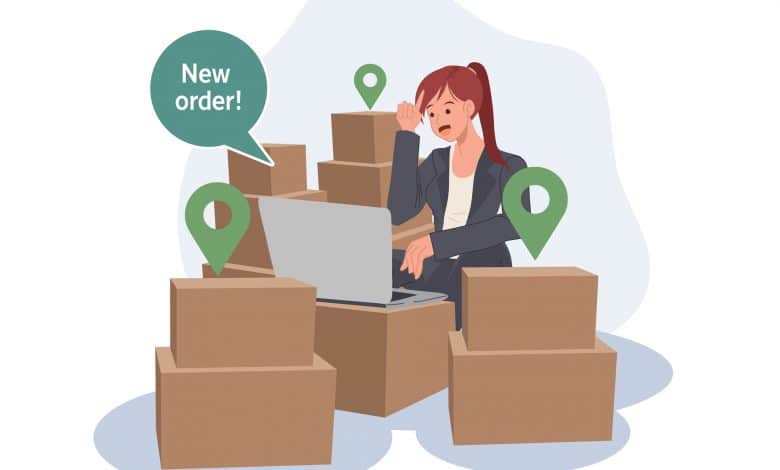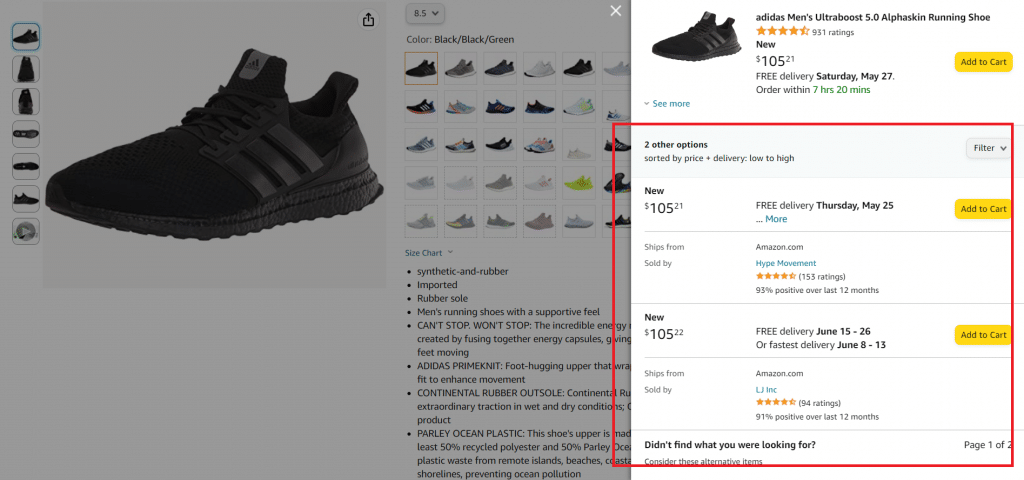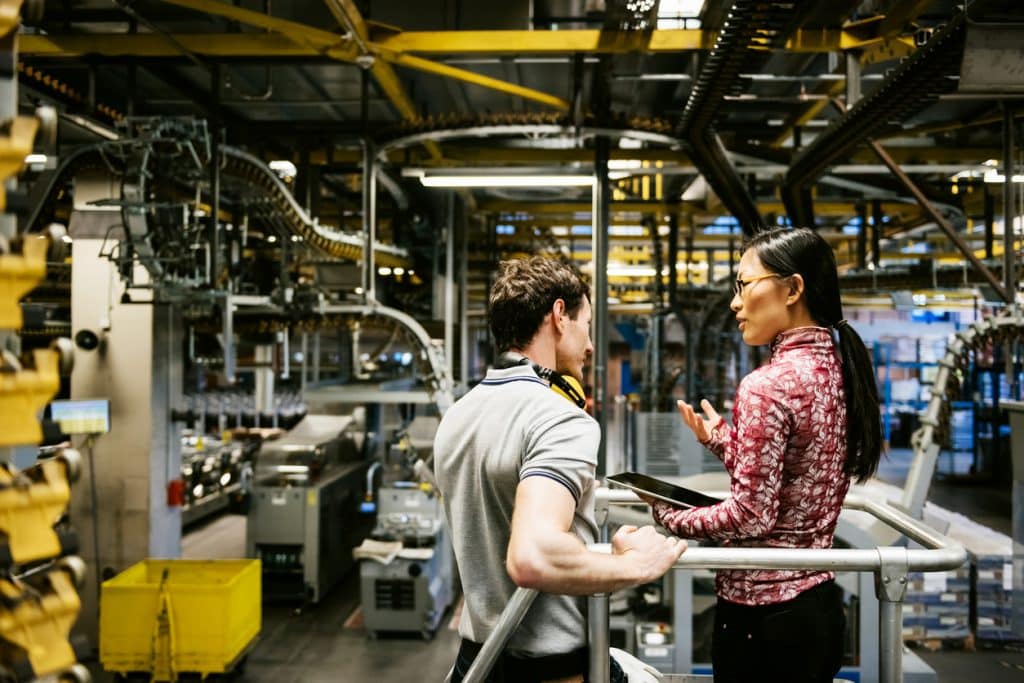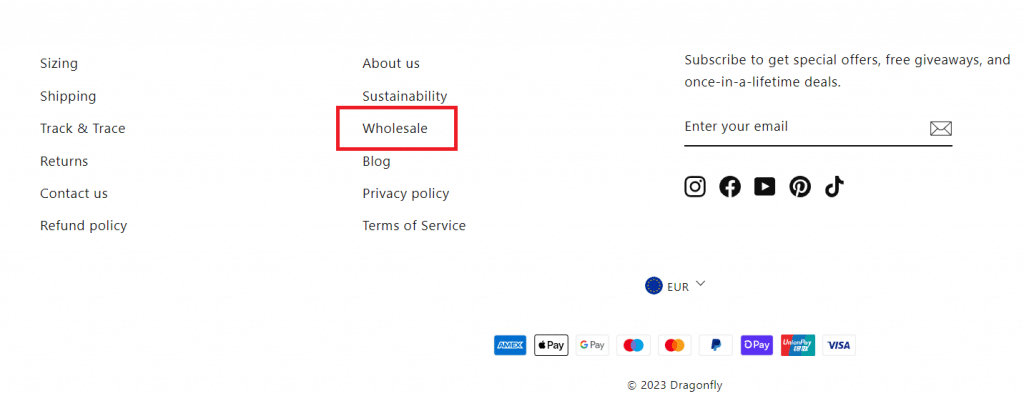How to Sell Wholesale Products on Amazon

Amazon is the most robust ecommerce platform by far—it quite literally has everything from A to Z, which makes it very hard to find profitable products to sell on the marketplace.
One lesser-known yet potentially lucrative route is to sell wholesale products on Amazon, and in this article, we’ll go over everything from researching products to wholesale, managing a wholesale account, pricing strategy, and much more.
Also Check Out: How to Sell on Amazon FBA
What Is Selling Wholesale on Amazon?
Selling wholesale on Amazon, as in traditional brick-and-mortar retail, is simply buying branded products in bulk at discounted prices directly from the manufacturer or supplier and then reselling them to customers. Wholesaling is a bit less sustainable than starting a private label ecommerce business, but there’s generally fewer barriers to entry, making it a solid choice for those who have minimal ecommerce or marketing experience.
Wholesale vs Other Amazon Business Models
While wholesale shares the same fundamentals as other ecommerce business models, it also has some stark differences from other models. The table below shows a comparison of wholesale to other Amazon business models.
| Retail Arbitrage vs. wholesale on Amazon | Dropshipping vs. wholesale on Amazon | Private Label vs. wholesale on Amazon |
| In wholesale, you’re usually buying items in bulk directly from the supplier, while in retail arbitrage, you’re buying items at discounted prices from various retail stores to resell them for profit. | In wholesale, you own a huge inventory and are in charge of fulfilling orders yourself, while in dropshipping, you merely list goods for sale, place an order once the sale is made, and have the order fulfilled without owning actual inventory of the products. | In wholesale, you’re usually reselling products from existing brands (or without brands for white-label sellers), while in private labeling, you’re selling products under your own brand and must create your own product listings. |
As you can see above, wholesaling is much earlier in the supply chain than other Amazon business models. This means that you are generally getting the items in bulk at the lowest possible prices, since you’re dealing directly with, or very close to, the manufacturer.
That being said, wholesale also has its fair share of drawbacks, such as having to deal with massive inventory levels (as opposed to dropshipping) and not being able to sell the products under your own ecommerce brand (as opposed to private labeling).
What Are the Pros and Cons of Selling Wholesale on Amazon?
Just like all other Amazon business models, Wholesale has its fair share of pros and cons. While the table below is not an exhaustive list, it should give you an idea on whether running a wholesale Amazon business is the right fit for you.
Amazon Wholesale Pros
- Little to no branding/marketing effort, as you’ll be selling products from established brands that consumers are already searching for
- Lower barrier to entry than other Amazon business models
- Generally easy to turn a profit, as there is no need to invest in branding and marketing
- No need to start and grow a customer base
- High sales velocity if brand already has great consumer demand
Amazon Wholesale Cons
- High competition in most cases, as you’ll be placing offers against multiple other wholesalers; Most brands will have a lot of other resellers (wholesalers) in their network
- Higher upfront costs for bulk orders
- Need to own and store high inventory levels
- Generally not as sustainable and scalable as building your own private label brand
- No control over the product specifications
How to Sell Wholesale on Amazon
To get started with wholesale on Amazon, you pretty much have to follow the same steps as other Amazon sellers running other business models.
First, go to Amazon and create a Professional seller account. Whereas the Individual plan is best for those who just want to get their feet wet, a Professional account is more suitable for wholesaler sellers because of its more robust feature set and benefits. You will then need to register as a business entity and provide all the necessary information, including tax details, to ensure compliance with Amazon's policies.
Check out our article on Creating an Amazon Seller Account for a full breakdown of these steps. Once your account is set up, you can start listing and selling your wholesale products on Amazon.
Also Read: The Unofficial Guide to Amazon TOS
From here, it’s going to be a matter of going through the motions of running an Amazon business as you would with, say, a dropshipping or a private label operation—i.e., you’ll want to craft optimized and high-quality product listings to rank better than your competition and monitor your key metrics to scale your business.

How Do You Find Wholesale Items to Sell on Amazon?
When it comes to the products sold, a successful wholesale business on Amazon will generally tick three main boxes: high demand, low competition, and potential for high profit margins.
Firstly, you’ll want to know what the hottest products on Amazon are in order to maximize profit potential as a wholesaler. There are multiple ways to do this, including studying the best selling categories on the Amazon marketplace itself, looking at the best selling products, and thoroughly researching the competition who are selling the same products you want to wholesale. As with other Amazon business models, always do your due diligence by validating a product’s profitability by looking at customer reviews, user ratings, sales velocity and keyword search volume. This can easily be done by using staple ecommerce seller tools like Jungle Scout.
Next, you’ll want to make sure that the product is in a low-competition niche. While there is no hard and fast rule to what low competition looks like in terms of wholesalers on Amazon, products and brands with dozens of other wholesalers is generally a red flag. You can easily get a bird’s eye view on the level of competition by running a main search keyword on your product and looking at how many other sellers are showing up. Amazon’s Product Opportunity Explorer and Brand Analytics features are also great tools to know things like the click share for the top brands and products on Amazon—the lower the click share, the more likely that no ruthless competition exists for that category.
Thirdly, you want to choose a product with high profit potential. One of the easiest ways to do this is by using our Amazon Selling & FBA Fees Calculator to find out the potential associated costs with your product. Small and light products are generally cheaper to store and ship, while oversize products will eat into your inventory management costs but could mean higher profits and lower competition.
How Do You Find Suppliers for Wholesale Products?
The biggest difference between private labeling and wholesale in terms of reaching out to suppliers is that in the latter, you’re reaching out to the brand owner directly. Once you successfully open an account with the supplier, you can proceed to place an order for your first inventory and start selling their products. For this, resources like supplier databases from the likes of ThomasNet or Worldwide Brands or our own vetted list of suppliers which you can access in our revamped China Importing course, will come in handy.
Most seasoned wholesalers on Amazon recommend attending huge trade shows like the Canton Fair in China, scouring online marketplaces, and leveraging industry specific resources.

Other methods include getting in touch with suppliers in person by attending trade shows that feature products you are interested in selling as well as finding suppliers on massive online marketplaces like Alibaba and AliExpress for China and eBay or Etsy in the US, all of which serve as gateways to thousands of suppliers. Many sellers have also connected with suppliers through channels like social media, industry groups, and professional recommendations, and relevant forums.
With these resources in mind, you also want to make sure to tick certain features that would make a partnership with your supplier profitable, such as the supplier having a high demand and brand awareness among consumers.
It’s important to note that building strong relationships with your suppliers is an essential part of success as a wholesaler on Amazon. Over time, a healthy relationship with your suppliers can mean better prices for your succeeding inventory orders, opportunities to expand your product range, and smoother communication and logistics processes.
What Are the Requirements to Become a Wholesaler on Amazon?
If you’re interested in a product and already know which brand or manufacturer is carrying it, you can generally go to their company website and look for a “Dealers” or “Wholesaler” section, where they will usually ask for your information if you’re interested in becoming a wholesaler for that brand. Generally, brands will require your basic business information like a registered business or sole proprietorship and your EIN (Employer Identification Number). You will also need to secure a resale certificate provided by the retailer to you as a wholesale dealer, which, in conjunction with your business license, will allow you to purchase products tax-free and collect sales taxes on your state’s behalf.

Final Thoughts
Selling wholesale on Amazon is relatively easy to start even with minimal ecommerce experience, however, it still requires careful planning and thorough research in order to be profitable. Understanding your desired products and building strong relationships with your suppliers are integral to success as a wholesaler.
Have you tried to sell wholesale products on Amazon before? We’d love to hear about your experience in the comments below.



